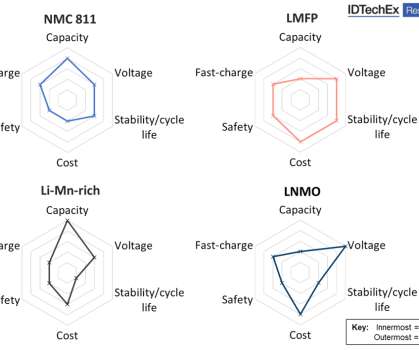IDTechEx comments on Volkswagen’s long-term, high-manganese cathode strategy
Green Car Congress
APRIL 2, 2021
The options for high-manganese cathodes include LMO (lithium-manganese oxide), LNMO (lithium-nickel-manganese oxide), Li-Mn-rich (also abbreviated as LMR-NMC), and LMP (lithium manganese phosphate) or LMFP (lithium-manganese-iron phosphate). Comparison between NMC 811 and three high-manganese cathodes (LMFP, Li-Mn-rich, LNMO).























Let's personalize your content